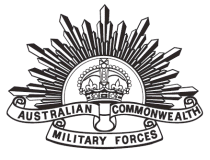
| Regimental number | 1794 |
| Place of birth | Eastbourne, Sussex, England |
| School | Whitley Road National School, Eastbourne, England |
| Age on arrival in Australia | 21 |
| Religion | Church of England |
| Occupation | Mounted policeman |
| Address | 129 Bulwer Street, Perth, Western Australia |
| Marital status | Married |
| Age at embarkation | 27 |
| Next of kin | Wife, Mrs Eva A Cannon, 129 Bulwer Street, Perth, Western Australia |
| Previous military service | Served in Dorsetshire Regiemtn and Royal Horse Artillery; Reserve Australian Artillery at Albany. |
| Enlistment date | |
| Rank on enlistment | Bombardier |
| Unit name | Field Artillery Brigade 3, Battery 8 |
| AWM Embarkation Roll number | 13/31/1 |
| Embarkation details | Unit embarked from Fremantle, Western Australia, on board Transport A7 Medic on |
| Rank from Nominal Roll | Bombardier |
| Unit from Nominal Roll | 3rd Field Artillery Brigade |
| Fate | Died of wounds |
| Place of death or wounding | Gaba Tepe, Gallipoli, Turkey |
| Age at death | 28 |
| Age at death from cemetery records | 28 |
| Commemoration details | The Lone Pine Memorial (Panel 11), Gallipoli, Turkey The Lone Pine Memorial, situated in the Lone Pine Cemetery at Anzac, is the main Australian Memorial on Gallipoli, and one of four memorials to men of the New Zealand Expeditionary Force. Designed by Sir John Burnet, the principal architect of the Gallipoli cemeteries, it is a thick tapering pylon 14.3 metres high on a square base 12.98 metres wide. It is constructed from limestone mined at Ilgardere in Turkey. The Memorial commemorates the 3268 Australians and 456 New Zealanders who have no known grave and the 960 Australians and 252 New Zealanders who were buried at sea after evacuation through wounds or disease. The names of New Zealanders commemorated are inscribed on stone panels mounted on the south and north sides of the pylon, while those of the Australians are listed on a long wall of panels in front of the pylon and to either side. Names are arranged by unit and rank. The Memorial stands over the centre of the Turkish trenches and tunnels which were the scene of heavy fighting during the August offensive. Most cemeteries on Gallipoli contain relatively few marked graves, and the majority of Australians killed on Gallipoli are commemorated here. |
| Panel number, Roll of Honour, Australian War Memorial | 12 |
| Miscellaneous information from cemetery records | Parents: Maria and the late Frederick CANNON; husband of E.A. CANNON. Native of Eastbourne, England |
| Family/military connections | Brother-in-law: 1809 Sergeant Cecil James GOAD, 16th Bn, returned to Australia, 8 April 1919. |
| Other details |
War service: Egypt, Gallipoli Medals: 1914-15 Star, British War Medal, Victory Medal |